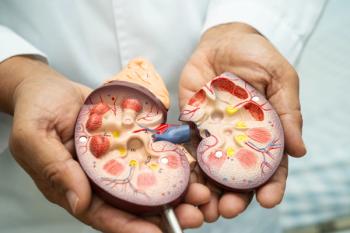
Young Adults With High Cholesterol Often Refrain From Proper Treatment, Monitoring
Key Takeaways
- Young adults with high LDL-C levels show low statin initiation rates, with only 45.7% starting treatment within five years.
- Follow-up LDL-C testing rates have declined, highlighting gaps in dyslipidemia management among young adults.
Young adults with high LDL-C levels face significant gaps in statin initiation and follow-up testing, highlighting urgent needs for improved cardiovascular care.
Clear gaps exist within lipid management for young adults with high levels of low-density lipoprotein cholesterol (LDL-C), who often do not promptly or ever initiate a statin and lack in returning for follow-up LDL-C testing. The data represent significant opportunities to improve lipid levels in young patients and prevent atherosclerotic cardiovascular disease (ASCVD).1
Patients aged 18 through 39 and members of the Kaiser Permanente Southern California health system with LDL-C measurements recorded between 2008 and 2020 were enrolled in the trial. Ultimately, 771,681 individuals comprised the study cohort, representing one of the largest trials ever to examine real-world LDL-C testing and statin initiation patterns among this population.2
Young Adults Lack Statin Initiation Across 5-Year Period
Overall, young adults with high LDL-C levels—considered 190 mg/dL or higher according to the 2018 ACC/AHA Cholesterol Guideline—initiated a statin within 1 year at a rate of 28.4%. By 3 years, 33.5% had initiated treatment, and by 5 years, only 45.7% had begun statin therapy.1,2
The cohort was stratified by LDL-C levels and patients at high risk of ASCVD. Individuals with a 30-year high ASCVD risk had initiated statins at rates of 25.3%, 31.9%, and 46.4% at 1, 2, and 5 years, respectively. For those harboring LDL-C levels higher than a range of 160 to 189 mg/dL, statins were begun at rates of 44.1%, 50.2%, and 61.5% within 1, 2, and 5 years, respectively.1,2
Follow-up LDL-C testing also declined in a concerning fashion. Testing within 1 year declined from 52.5% in 2008 to 35.4% in 2018 in high-risk patients. These data cumulatively highlight major holes in the care of young adults with dyslipidemia, requiring greater multidisciplinary collaboration and thoughtful evaluation of current treatment strategies.1,2
"Within our integrated system in Southern California, we observed that some high-risk young adults were not consistently following up with the LDL-C testing or statin therapy recommended by guidelines," Teresa N. Harrison, SM, researcher at Kaiser Permanente Southern California Department of Research and Evaluation and lead author of the study, said in a news release.2
Opportunities for Further Research
“Our findings underscore that early adulthood is a critical window for prevention, and identifying these areas of opportunities for earlier intervention is essential to reducing young adults’ lifelong heart risk,” Harrison continued.2
The investigators noted that, because the study was conducted within a large, insured health system population, it could limit how broadly these findings apply in different settings or among uninsured patients. Additionally, these investigators did not assess whether patients who were prescribed statins took them consistently, which could further affect long-term cardiovascular outcomes.2
Other key factors were not assessed, including clinician and patient perspectives as to why statins were not initiated or why incomplete follow-up testing was reported. These can play significant roles in real-world scenarios, necessitating further research. For pharmacists, these gaps present significant opportunities for care integration and more thorough patient monitoring among young adults. Elevated LDL-C at a young age could mark the beginning of a lifetime of cardiovascular risk, requiring prompt action and monitoring.2
“The good news is that health care systems have a potential roadmap to develop next-generation care models,” Harrison said. “The promising results from our safety net program suggest that integrating patient outreach and clinician decision support may be an effective strategy to further advance proactive, early cardiovascular prevention.”2
REFERENCES
1. Harrison TN, Zhang Y, Choi SK, et al. Follow-up lipid testing and statin initiation among young adults in a US healthcare system. JACC. Published Online November 10, 2025. Accessed November 13, 2025. doi:10.1016/j.jacc.2025.10.052
2. Young adults with elevated cholesterol often go untreated, study finds. American College of Cardiology. Published November 10, 2025. Accessed November 13, 2025. https://www.acc.org/About-ACC/Press-Releases/2025/11/10/19/29/Young-Adults-With-Elevated-Cholesterol-Often-Go-Untreated-Study-Finds
3. Grundy SM, Stone NJ, Bailey AL, et al. 2018 AHA/ACC/AACVPR/AAPA/ABC/ACPM/ADA/AGS/APhA/ASPC/NLA/PCNA. Guideline on the management of blood cholesterol: A report of the American College of Cardiology/American Heart Association task force on clinical practice guidelines. JACC. 2018;73(24):e285-e350. doi:10.1016/j.jacc.2018.11.003
Newsletter
Stay informed on drug updates, treatment guidelines, and pharmacy practice trends—subscribe to Pharmacy Times for weekly clinical insights.


















































































































































































































